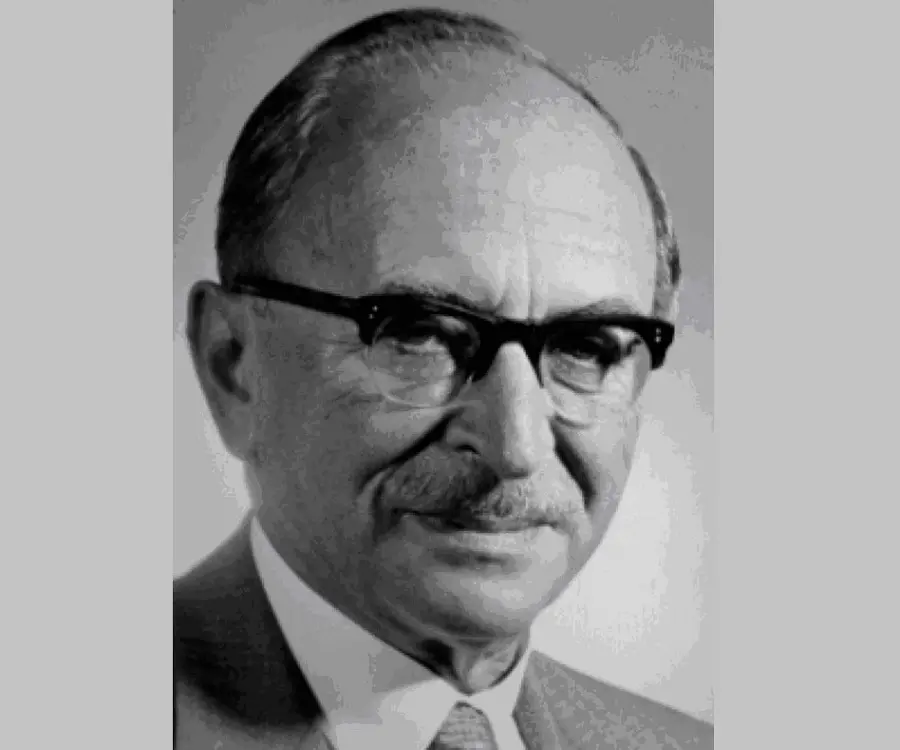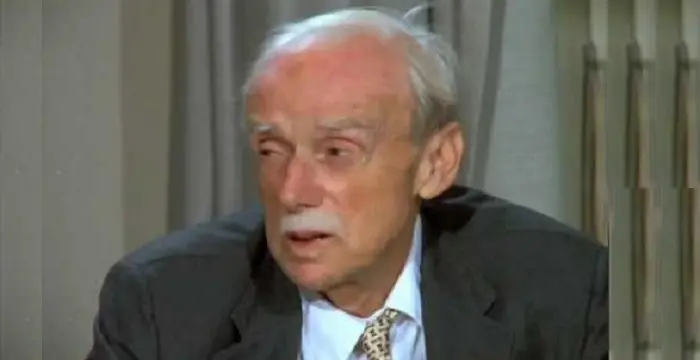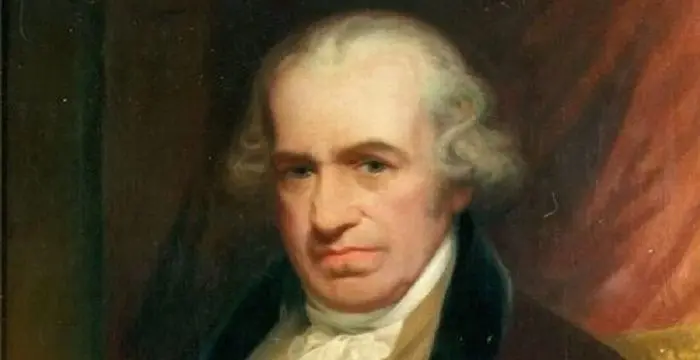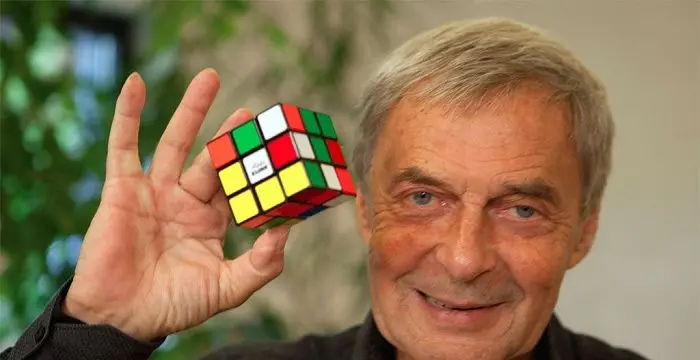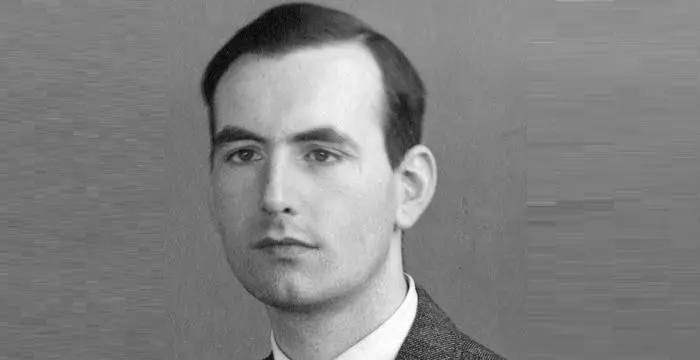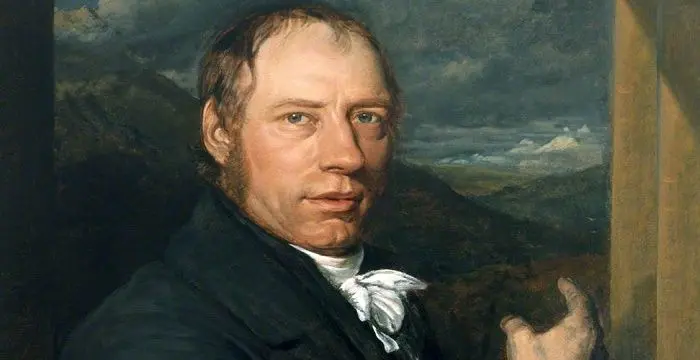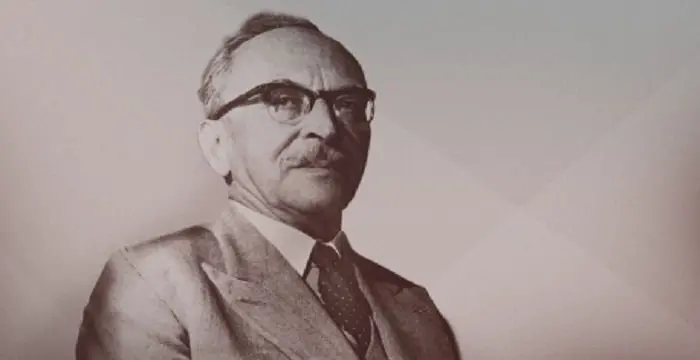
Dennis Gabor - Father of Holography, Facts and Life
Dennis Gabor's Personal Details
Dennis Gabor was a Hungarian-born British electrical engineer and physicist, best known for inventing holography
| Information | Detail |
|---|---|
| Birthday | June 5, 1900 |
| Died on | February 8, 1979 |
| Nationality | Hungarian |
| Famous | Electrical Engineers, Inventors & Discoverers, Physicists, Father of Holography |
| Universities |
|
| Discoveries / Inventions |
|
| Birth Place | Budapest |
| Religion | Judaism |
| Gender | Male |
| Sun Sign | Gemini |
| Born in | Budapest |
| Famous as | Father of Holography |
| Died at Age | 78 |
Dennis Gabor's photo
Who is Dennis Gabor?
Dennis Gabor was a Hungarian-born British electrical engineer and physicist, best known for inventing holography. He received the prestigious 1971 Nobel Prize in Physics, 1971 “for his invention and development of the holographic method”. He started his career as a research engineer for the firm ‘Siemens & Halske AG’ in Berlin but within a few years had to escape Nazi Germany because of his Jewish ancestry. He reached England where he joined the Thomson-Houston Company in Rugby and later became a British citizen. In 1947, he conjured up the concept of holography and by using conventional filtered-light sources, developed the basic technique. In 1949, he became a faculty member of the Imperial College of Science and Technology, London and within a couple of years, became a professor of Applied Electron Physics. His other notable work included research on physical optics, communication theory, high-speed oscilloscopes, and television. Apart from winning the Nobel Prize, he received more than 100 patents for his work. His most celebrated work remains the holography, which became commercially feasible after the advent of the laser in 1960. He is fondly referred to as the ‘Father of Holography’.
// Famous Physicists
Henry Cavendish
Henry Cavendish was a theoretical chemist and physicist, renowned for discovery of hydrogen and calculation of the mass of earth. To know more about his childhood, profile, timeline and career read on
Walter Kohn
Nobel Laureate Walter Kohn was an Austrian-born American theoretical chemist and physicist. Check out this biography to know about his childhood, life, achievements, works & timeline.
Nikola Tesla
Nikola Tesla was a Serbian-American inventor, best known for his development of alternating current electrical systems. This biography of Nikola Tesla provides detailed information about his childhood, life, achievements, works & timeline.
Childhood & Early Life
Dennis Gabor was born on 5 June 1900, in Budapest, Hungary. He was the oldest son of Günszberg Bernát and Jakobovits Adél. In 1902, the family changed their surname from Günszberg to Gábor.
His family was originally Jewish but in 1918, they converted to Lutheranism. Meanwhile, during World War I, he served with the Hungarian artillery in northern Italy.
After the war ended in 1918, he decided to study engineering. However, physics had always been his favourite subject. He began Electrical Engineering studies in Budapest, and later finished at the Technical Hochschule Berlin-Charlottenburg. He obtained a Diploma, in 1924.
He also received the doctorate degree in Engineering in 1927, submitting a thesis on the development of one of the first high speed cathode ray oscillographs.
Career
At the beginning of his career, he developed an interest in electron optics and examined the properties of high voltage electric transmission lines, by using cathode-beam oscillographs. He gradually analysed other electron-beam devices such as electron microscopes and TV tubes.
In 1927, he wrote his doctoral thesis on ‘Recording of Transients in Electric Circuits with the Cathode Ray Oscillograph’ and worked on plasma lamps.
In 1933, he had to leave Germany because of his Jewish lineage. After a brief stay in Hungary, he reached England where he was invited to work at the Thomson-Houston company in Rugby, Warwickshire. He eventually became a British citizen in 1946.
In 1947, he invented holography by using a conventional filtered-light source. However, since conventional light sources usually offered either too less light or too diffused light, holography could not be used commercially until the advent of the laser in 1960.
His studies further explored the inputs and outputs of electrons, which led him to invent re-holography. He published the related theories in a series of papers between 1946 and 1951.
After a while, he also investigated the mechanism of communication among human beings and developed the theory of granular synthesis which later became the foundation of time-frequency analysis.
In 1948, he became a faculty member of Imperial College London. Ten years later, he was made a professor of Applied Electron Physics and continued in the position till his retirement in 1967.
In 1963, he published the book ‘Inventing the Future’ which talked about the three main dangers he saw, to modern society: war, overpopulation and the Age of Leisure. His next book, ‘Innovations: scientific, technological, and social’ was published in 1970, and revealed his interest in technological innovation as a means to both liberation and destruction.
In 1971, he received the prestigious Nobel Prize in Physics “for his invention and development of the holographic method”. In his Nobel lecture, he presented the history of the development of holography from 1948.
Post retirement, he spent much of his time in Italy. He continued to be associated with Imperial College London as a Senior Research Fellow and also became a Staff Scientist at CBS Laboratories, in Stamford, Connecticut.
His interest in social analysis saw him publish ‘The Mature Society: a view of the future’ in 1972. He also supervised a working group in the Club of Rome studying energy sources and technical change. The findings were published in the 1978 report ‘Beyond the Age of Waste’.
Major Works
Although by profession Dennis Gabor was an electrical engineer, he worked mostly in applied physics. In 1927, he made his first successful invention; the high pressure quartz mercury lamp, which thereafter has been used in millions of street lamps.
In 1947, he experimented with the idea of holography and by using conventional filtered-light sources, developed the basic technique.
His other work included research on high-speed oscilloscopes, communication theory, physical optics, and television. He received more than 100 patents during his lifetime.
Awards & Achievements
The advent of lasers enabled the practical application of holography and Gabor found worldwide recognition and success. He won several awards and honours during his lifetime.
In 1956, he was elected a Fellow of the Royal Society (FRS). In 1964, he became Honorary Member of the Hungarian Academy of Sciences and got a D.Sc. degree from the University of London.
In 1967, he won the Young Medal and Prize, for distinguished studies in the field of optics, as well as, the Columbus Award of the International Institute for Communications, Genoa.
In 1968, he won the first Albert A. Michelson Medal from The Franklin Institute, Philadelphia, followed by the Rumford Medal from the Royal Society.
In 1970, he got an Honorary Doctorate from the University of Southampton, won the Medal of Honour from the Institute of Electrical and Electronics Engineers, and received the Commander of the Order of the British Empire (CBE).
In 1971, he won the famed Nobel Prize in Physics, for his invention and development of holography. The same year, he received an Honorary Doctorate from the Delft University of Technology. The next year, he won the Holweck Prize of the Société Française de Physique.
The NOVOFER Foundation of the Hungarian Academy of Sciences presents the International Dennis Gabor Award every year to outstanding young scientists researching in the fields of physics and applied technology.
The Royal Society of London awards The Gabor Medal for “acknowledged distinction of interdisciplinary work between the life sciences and other disciplines”.
Personal Life & Legacy
Dennis Gabor met his future wife, Marjorie Louise Butler. when he was in Rugby, Warwickshire. The couple married in 1936.
He died in South Kensington, London, on 9 February 1979.
// Famous Electrical Engineers
Satya Nadella
Satya Nadella is the current CEO of Microsoft. This biography provides detailed information about his childhood, profile, career, net worth & timeline
Nikola Tesla
Nikola Tesla was a Serbian-American inventor, best known for his development of alternating current electrical systems. This biography of Nikola Tesla provides detailed information about his childhood, life, achievements, works & timeline.
Paul Dirac
Paul Dirac was an English theoretical physicist known for his contributions to quantum mechanics and quantum electrodynamics. This biography of Paul Dirac provides detailed information about his childhood, life, achievements, works & timeline
Dennis Gabor's awards
| Year | Name | Award |
|---|---|---|
Other | ||
| 0 | 1971 - Nobel Prize in Physics | |
| 0 | 1970 - IEEE Medal of Honor | |
| 0 | 1968 - Rumford Medal | |
| 0 | 1967 - Young Medal and Prize | |
Dennis Gabor biography timelines
- // 5th Jun 1900 To 1902Dennis Gabor was born on 5 June 1900, in Budapest, Hungary. He was the oldest son of Günszberg Bernát and Jakobovits Adél. In 1902, the family changed their surname from Günszberg to Gábor.
- // 1918His family was originally Jewish but in 1918, they converted to Lutheranism. Meanwhile, during World War I, he served with the Hungarian artillery in northern Italy.
- // 1918 To 1924After the war ended in 1918, he decided to study engineering. However, physics had always been his favourite subject. He began Electrical Engineering studies in Budapest, and later finished at the Technical Hochschule Berlin-Charlottenburg. He obtained a Diploma, in 1924.
- // 1927He also received the doctorate degree in Engineering in 1927, submitting a thesis on the development of one of the first high speed cathode ray oscillographs.
- // 1927In 1927, he wrote his doctoral thesis on ‘Recording of Transients in Electric Circuits with the Cathode Ray Oscillograph’ and worked on plasma lamps.
- // 1927Although by profession Dennis Gabor was an electrical engineer, he worked mostly in applied physics. In 1927, he made his first successful invention; the high pressure quartz mercury lamp, which thereafter has been used in millions of street lamps.
- // 1933 To 1946In 1933, he had to leave Germany because of his Jewish lineage. After a brief stay in Hungary, he reached England where he was invited to work at the Thomson-Houston company in Rugby, Warwickshire. He eventually became a British citizen in 1946.
- // 1936Dennis Gabor met his future wife, Marjorie Louise Butler. when he was in Rugby, Warwickshire. The couple married in 1936.
- // 1946 To 1951His studies further explored the inputs and outputs of electrons, which led him to invent re-holography. He published the related theories in a series of papers between 1946 and 1951.
- // 1947 To 1960In 1947, he invented holography by using a conventional filtered-light source. However, since conventional light sources usually offered either too less light or too diffused light, holography could not be used commercially until the advent of the laser in 1960.
- // 1947In 1947, he experimented with the idea of holography and by using conventional filtered-light sources, developed the basic technique.
- // 1948 To 1967In 1948, he became a faculty member of Imperial College London. Ten years later, he was made a professor of Applied Electron Physics and continued in the position till his retirement in 1967.
- // 1948 To 1971In 1971, he received the prestigious Nobel Prize in Physics “for his invention and development of the holographic method”. In his Nobel lecture, he presented the history of the development of holography from 1948.
- // 1956 To 1964In 1956, he was elected a Fellow of the Royal Society (FRS). In 1964, he became Honorary Member of the Hungarian Academy of Sciences and got a D.Sc. degree from the University of London.
- // 1963 To 1970In 1963, he published the book ‘Inventing the Future’ which talked about the three main dangers he saw, to modern society: war, overpopulation and the Age of Leisure. His next book, ‘Innovations: scientific, technological, and social’ was published in 1970, and revealed his interest in technological innovation as a means to both liberation and destruction.
- // 1967In 1967, he won the Young Medal and Prize, for distinguished studies in the field of optics, as well as, the Columbus Award of the International Institute for Communications, Genoa.
- // 1968In 1968, he won the first Albert A. Michelson Medal from The Franklin Institute, Philadelphia, followed by the Rumford Medal from the Royal Society.
- // 1970In 1970, he got an Honorary Doctorate from the University of Southampton, won the Medal of Honour from the Institute of Electrical and Electronics Engineers, and received the Commander of the Order of the British Empire (CBE).
- // 1971In 1971, he won the famed Nobel Prize in Physics, for his invention and development of holography. The same year, he received an Honorary Doctorate from the Delft University of Technology. The next year, he won the Holweck Prize of the Société Française de Physique.
- // 1972 To 1978His interest in social analysis saw him publish ‘The Mature Society: a view of the future’ in 1972. He also supervised a working group in the Club of Rome studying energy sources and technical change. The findings were published in the 1978 report ‘Beyond the Age of Waste’.
- // 9th Feb 1979He died in South Kensington, London, on 9 February 1979.
// Famous Inventors & Discoverers
Nikola Tesla
Nikola Tesla was a Serbian-American inventor, best known for his development of alternating current electrical systems. This biography of Nikola Tesla provides detailed information about his childhood, life, achievements, works & timeline.
Thomas Newcomen
Thomas Newcomen was a British inventor who developed the world’s first steam engine. Browse through this biography to learn in details about his life, career, works and timeline.
Erno Rubik
The famous inventor and educationist, Erno Rubik is known world-wide for his invention the ‘Rubik’s Cube’. To know more about the childhood, profile, timeline and career of this famous architect-inventor read on.
Ernst Ruska
Ernst Ruska was a German physicist who invented the electron microscope. Check out this biography to know about his childhood, life, achievements, works & timeline.
Howard Hughes
Howard Hughes was an American aviator, business tycoon, philanthropist and also a film maker. This biography explores his childhood, career, achievements and timeline.
Richard Trevithick
Richard Trevithick was a British inventor who was the pioneer of steam-powered road and rail transport. Check out this biography to know about his childhood, family life, achievements and fun facts about him.
Dennis Gabor's FAQ
What is Dennis Gabor birthday?
Dennis Gabor was born at 1900-06-05
When was Dennis Gabor died?
Dennis Gabor was died at 1979-02-08
Where was Dennis Gabor died?
Dennis Gabor was died in London
Which age was Dennis Gabor died?
Dennis Gabor was died at age 78
Where is Dennis Gabor's birth place?
Dennis Gabor was born in Budapest
What is Dennis Gabor nationalities?
Dennis Gabor's nationalities is Hungarian
What was Dennis Gabor universities?
Dennis Gabor studied at Technical University of Berlin, Budapest University of Technology and Economics
What is Dennis Gabor's inventions/discoveries?
Holography was invented (or discovered) by Dennis Gabor
What is Dennis Gabor's religion?
Dennis Gabor's religion is Judaism
What is Dennis Gabor's sun sign?
Dennis Gabor is Gemini
How famous is Dennis Gabor?
Dennis Gabor is famouse as Father of Holography
